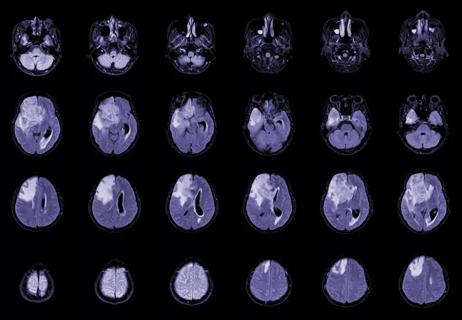New meta-analysis helps resolve the controversy

A recent Cleveland Clinic meta-analysis found that tumor PD-L1 expression with a 5 percent cutoff is a reliable predictor of treatment success with PD-1/PD-L1 checkpoint inhibitors for various cancers, including non-small cell lung cancer (NSCLC) and other hard-to-treat malignancies.
Cleveland Clinic is a non-profit academic medical center. Advertising on our site helps support our mission. We do not endorse non-Cleveland Clinic products or services. Policy
Over the past few years, there has been tremendous enthusiasm about immunotherapy for various solid tumors, and now researchers are exploring the PD-1/PD-L1 pathway as a target in hematologic malignancies, as well. Immune checkpoint inhibition using the PD-1/PD-L1 pathway has shown good clinical efficacy across a variety of tumor types, is very well-tolerated and provides durable meaningful clinical responses in patients who are otherwise hard to treat. However, not all tumors are responsive to this therapy, highlighting the need for reliable predictive biomarkers.
“We decided to do this systematic analysis because of the many contradictory studies and resulting controversy surrounding the use of PD-L1 expression assays to predict the successful targeting of this pathway,” says Vamsidhar Velcheti, MD, an oncologist at Cleveland Clinic’s Department of Hematology and Oncology and co-author on the study that was presented in a poster session at the 2016 American Society of Clinical Oncology (ASCO) Annual Meeting in Chicago.
The study systematically reviewed all published and presented clinical trials that reported on the use of PD-1 and PD-L1 inhibitors to treat various solid tumors and also reported the levels of tumor PD-L1 expression. In their analysis, investigators stratified these trials by the various methods that had been used to define PD-L1 positivity.
“One of the main challenges with PD-L1 expression and its use as a predictive marker has been how to define positivity ‒ what is the cutoff for PD-L1 tumor expression in this assay for it to be clinically meaningful and useful?” says Dr. Velcheti.
The study analyzed 18 distinct clinical trials with a total of 2,731 patients and various tumor types (NSCLC, melanoma, renal cell carcinoma and bladder cancer). PD-L1 expression was strongly predictive of response to the drugs (nivolumab, pembrolizumab, atezolimumab, durvalumab and avelumab), and having tumor PD-L1 expression of 5 percent was the most clinically meaningful cutoff. The only exceptions were two studies in bladder cancer, and findings were attributed to the very small cohorts in these studies.
One challenge in these trials of various drugs was the lack of standardized PD-L1 expression assays. Virtually every pharmaceutical company has used its own proprietary PD-L1 antibody assay, and that also is a limitation of the present study, Dr. Velcheti says.
Another limitation is that the cutoffs for every study were different and the present analysis was mainly limited to the trials that had data on PD-L1 tumor expression cutoffs at 1 percent, 5 percent and 10 percent, he says. For example, some trials ‒ such as the durvalumab trials ‒ had used a 25 percent cutoff and there were no data for the lower levels, so researchers had to eliminate these trials from the analysis. Additionally, most trials used tumor cell expression only, but some, such as the atezolimumab trial, used both tumor and stromal components, leading to elimination in the present analysis as well.
Overall, however, the meta-analysis found the tumor PD-L1 expression to be reliably predictive.
“I think these results are thought-provoking and show that there is utility in testing for PD-L1 tumor expression to help determine whether a patient might be an appropriate candidate for immune checkpoint inhibition using this pathway,” concludes Dr. Velcheti.

Timing and type of side effects differ greatly from chemotherapy

Dedicated multidisciplinary teams support 84 ultra-rare cancers

Sessions explore treatment advances and multidisciplinary care

New research from Cleveland Clinic helps explain why these tumors are so refractory to treatment, and suggests new therapeutic avenues

Combination of olaparib and carboplatin results in complete durable response for a patient with BRCA2 and “BRCAness” mutations

Early communication between oncologists and ophthalmologist warranted

Case-based course delves into latest treatment approaches

Long-term relationship building and engagement key to gaining community trust